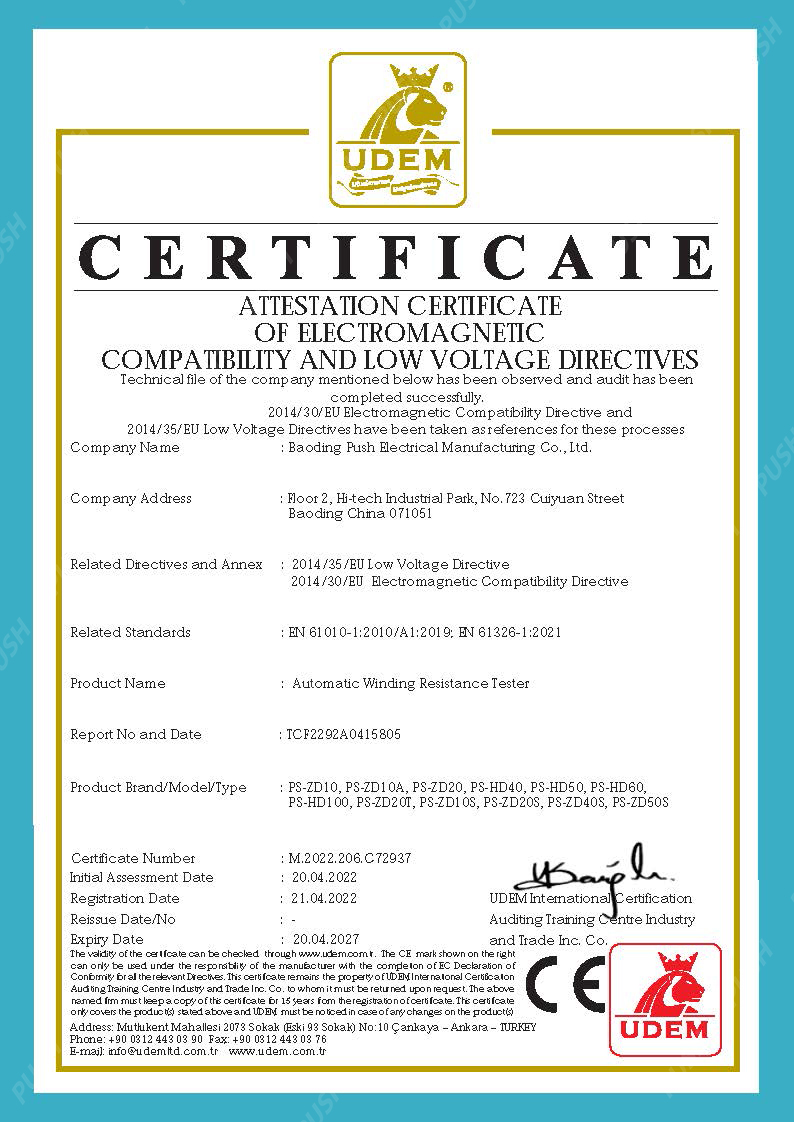 English
English


Contact Resistance Measurement Equipment for Electrical Testing Applications
Understanding Contact Resistance Test Sets
In the realm of electrical testing, ensuring the reliability and efficiency of electrical connections is paramount. One crucial aspect of this process is the measurement of contact resistance, which can significantly affect the performance of electrical systems. A contact resistance test set is an essential tool designed specifically to measure the resistance at the junctions between electrical contacts. This article delves into what contact resistance is, why it matters, and how a contact resistance test set functions.
What is Contact Resistance?
Contact resistance refers to the opposition to current flow at the interface between two conductive materials. Even when materials are joined tightly together, microscopic imperfections or contaminants can create high-resistance pathways. This can lead to overheating, energy losses, and even equipment failure over time. For electrical connections, maintaining low contact resistance is vital for optimal performance and longevity; thus, measuring and managing it is a critical function in various industries, from power generation to telecommunications.
Why is Contact Resistance Important?
The importance of measuring contact resistance cannot be overstated. High contact resistance can result in increased heat generation, which can damage components and reduce overall system efficiency. In high-current applications, even a small increase in resistance can lead to significant power losses and safety hazards. Regular testing of contact resistance helps ensure that connections are secure and functioning correctly, minimizing risks of failure. It also extends the life of electrical components, thereby improving maintenance schedules and reducing costs associated with unexpected downtime.
The Role of Contact Resistance Test Sets
A contact resistance test set is specifically designed to measure the resistance at electrical connections accurately. These devices typically apply a known current to the contact and measure the resulting voltage drop, allowing the calculation of resistance based on Ohm’s Law (R = V/I). Most modern contact resistance test sets come equipped with advanced features that enhance accuracy and usability, including
contact resistance test set

1. Precision Measurement High-quality test sets provide accurate readings, often with resolutions in the micro-ohm range. This precision is critical for detecting subtle changes in resistance that could indicate an impending failure.
2. Automatic Functionality Many devices offer automatic test sequences, which streamline the testing process, reduce human error, and save time during inspections.
3. Data Logging and Connectivity Modern test sets often incorporate data logging capabilities, allowing users to store, analyze, and share results easily. Some devices even feature wireless connectivity, facilitating real-time monitoring and reporting.
4. User-Friendly Interfaces Innovations in user interfaces have made it easier for technicians to operate these devices, with touchscreens and intuitive menus that provide access to a wide range of testing options and results analysis.
Applications of Contact Resistance Test Sets
Contact resistance test sets find applications in various industries, including power generation, manufacturing, and telecommunications. In power distribution networks, regular testing ensures that connections remain efficient and safe. In manufacturing, they help maintain the quality and reliability of assembly processes that rely on electrical connections. Additionally, they are crucial in maintenance routines for circuit breakers, switchgear, and transformers to ensure optimal operational standards.
Conclusion
In summary, contact resistance test sets are indispensable tools in the electrical testing landscape. By accurately measuring contact resistance, they help maintain the integrity and efficiency of electrical connections, ultimately ensuring the smooth operation of a wide range of systems. As the demand for reliable electrical performance continues to grow, the role of these test sets remains critical, making them a valuable asset for professionals in the field. Investing in quality contact resistance testing equipment not only safeguards against potential failures but also promotes better energy management and operational efficiency.
-
Differences between open cup flash point tester and closed cup flash point testerNewsOct.31,2024
-
The Reliable Load Tap ChangerNewsOct.23,2024
-
The Essential Guide to Hipot TestersNewsOct.23,2024
-
The Digital Insulation TesterNewsOct.23,2024
-
The Best Earth Loop Impedance Tester for SaleNewsOct.23,2024
-
Tan Delta Tester--The Essential Tool for Electrical Insulation TestingNewsOct.23,2024





